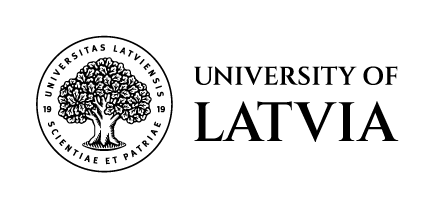References – overall requirements
- References and comments must be added as the end-text footnotes. Numbering of the references and commentary must be ascending.
- In the references the full name of the author(s), redactor(s) or editor(s) must be written. Name and surname must be written in small caps. After the name(s) of the editor(s) or redactor(s) in the brackets follows (ed.) or (eds.), (Hg.) or (Hgg.) or (red.) and period afterwards. Rest of the references must be formed according to the descriptors of the literature used, for example, title, subtitle, place, and year of publishing, in the brackets name of the series or serial number. Number of page(s) must be indicated when the paper is mentioned for the first time. Name of the publisher must not be indicated.
- Reference is a grammatical unit; therefore, a period must be added at the end. If more than one literature is added in the references, they should be separated by using semicolons.
- For dates between period and next number space is not needed, for example: 19.01.2012.
- If the year or place of publishing is not known, then abbreviation w. p. (without place) or/and w. y. (without year) must be used.
- If the year and/or place and/or name of the author is not mentioned, however one of them is known, then they must be written in square brackets. For example:
- In the text the number of the reference and comment must be written in roman, even if it is in the citation which is formatted in italic. The reference number must always be added after the period.
Reference system
Monographs and collective works
1. Example: Monographs
2. Example: Thesis
3. Example: Collective works
If in the reference specific page is mentioned, it must be written as follows:
If the pages from–to are mentioned in the reference, it must be written as follows:
If in the references, the monograph is mentioned repeatedly, then it must be written as follows: surname, name of the monograph or it’s shortened version, page. For example:
If there are references of the same study as in the previous reference, then the Latin word “Ibidem” must be used regardless of the language manuscript is being written. If there is specific page indicated, it must be written as follows:
Ibidem, p. 56. (for manuscripts in English)
If there are three or more authors of the study, then for the first time all of them are mentioned in the reference, afterwards only the name of the first author and “et al.”.
If the author has two or more names, then the first name is written and the rest of them in abbreviation. For example:
Article in the journal or other periodical editions
When referencing an article from the periodical edition, pages from–to of the article must be indicated and afterwards the specifically cited page(s) by using “here”.
1. Example: article in the academic journal or a yearbook
The number of the volume or series must be indicated after the title of the journal. If only the number of volumes is indicated, then it must be written as follows:
If both – volume and series are indicated, then:
2. Example: press
In the Newspaper. If the pages of the newspaper are numbered, then specific page must be indicated in the references:
In the Journal
When referring repeatedly:
SURNAME, Name of the article (if it is short) or shortened version of, page.
Article in the collective editions
1. Example: collection of the articles
2. Example: lexicon
Referring repeatedly:
3. Example: internet
If the reference given is to a resource in another language than Latvian, English, German and Russian, then after the title in the original language in the square brackets translation in English or Latvian must be written. For example:
If the article is also published in printed version, then reference should be as follows:
Unpublished sources: single document or document collection
In the specifics of documents, the following information must be indicated: Institution and/or official on whose behalf document was created (name of the institution and/or name, surname, and position of the official) or individual who has published the document (name and surname of the person must be indicated), type of the text or document (for example, bill, protocol, letter etc.), addressee and/or aim, date (day, month and year, for example 03.12.1645.). After the description of the document, the name of the archive, fund-description-file, page, or page from–to must be written.
The name of the document must be formulated in Latvian or English (depending on the language of the manuscript) in square brackets the original language of the document must be indicated. In English manuscripts – [Russian], [German] etc.
When repeatedly referring to the same file, but different page, it must be written as follows:
When the other half of the page in the document is not numbered, then it’s previous half must be numbered with the same number but adding small v (which represents Latin word verso, i.e., other half), for example: p. 192v (without space).
With small letters – a and b sections of the columns are indicated, if the text of the source is written in columns, with a is indicated the left column and with b – right.
Published sources
Document collections
Separate document from document collections
Chronicles, biographies, autobiographies etc.
Ancient prints
Titles or the texts in the title page of the ancient prints can be very voluminous, thus must be shortened by excluding some parts of the text. These exclusions must be indicated with […]. Authors themselves must decide if they are shortening the title of the ancient prints.

